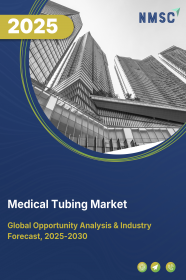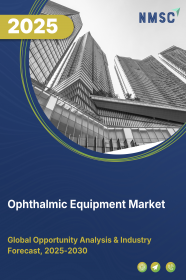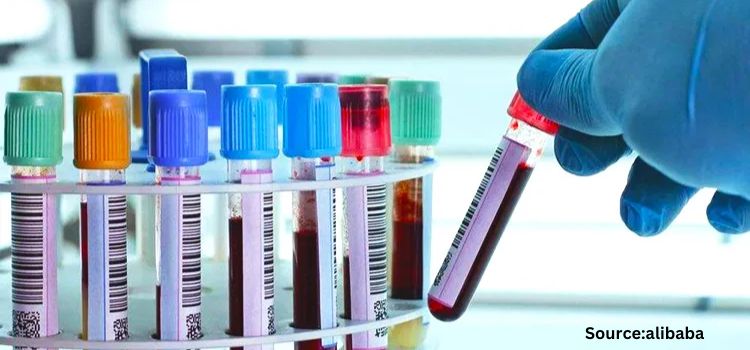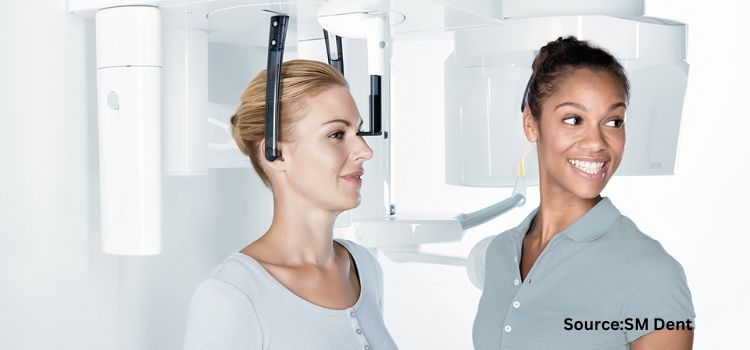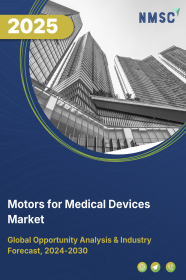
Motors for Medical Devices Market by Motor Type (DC Motors (Brushless DC Motors and Brushed DC Motors), Stepper Motors, Servo Motor, and Others), by Power Rating (Low Power Rating, Medium Power Rating, and High Power Rating), by Application (Diagnostic Imaging System, Surgical Devices, Patient Mobility Devices, and Life Support Equipment), and by End-User (Hospital & Clinic, Ambulatory Surgical Centers, Home Healthcare, and Others) – Global Opportunity Analysis and Industry Forecast 2025–2030
US Tariff Impact on Motors for Medical Devices Market
Trump Tariffs Are Reshaping Global Business
Motors for Medical Devices Market Overview
The global Motors for Medical Devices Market size was valued at USD 4.25 billion in 2024 and is predicted to reach USD 6.49 billion by 2030 with a CAGR of 7.3% from 2025-2030.
The factors such as growing healthcare cost, global rise in assistive technology, and key product launches drive the market growth. However, the growth of the market is restricted by the complicated regulatory requirements.
Integration of medical motors in robotics on the other hand is anticipated to create future opportunities in the industry. Some of the top players such as ElectroCraft Inc., Maxon Computer GmbH, and Faulhaber Micromo LLC are adopting various strategies such as product launches to enhance their market position and upgrade its product portfolio. These initiatives are expected to drive innovation and adoption in the motors for medical devices industry, creating a more motorized environment.
Boosting Healthcare Expenditure Drives the Market Growth
Rising healthcare expenditures drives the motors for medical devices market demand by enabling increased investments in advanced medical devices and infrastructure. The U.K. healthcare spending summed USD 371 billion in 2023, a 5.6% rise from 2022, according to the U.K. Office for National Statistics. In contrast, in Canada as per CIHI report, healthcare spending is expected to reach USD 372 billion or USD 9,054 per Canadian in 2024 showing a 5.7% increase.
Such increased investment by government and healthcare providers assists in adoption of innovative technologies such as robotic surgical systems, portable diagnostic devices, and motorized assistive tools that relies on medical motors for precision and efficiency. Such technological shift boosts the market growth.
Global Rise in Assistive Technology Fuels Market Growth
The global rise in assistive technology among the aging population is increasing the demand of high-performance motors in medical devices such as wheelchairs, stairlifts, and robotic exoskeletons. As per WHO 2024, globally more than 2.5 billion people need one or more assistive products and with rise in aging population and non-communicable disease, an estimated 3.5 billion peoples are estimated to require assistive technology by 2050. Such growing aging population requires assistive technology for enhanced mobility and convenience that ultimately promotes the motors for medical devices market expansion.
Key Product Launches by Key Players Drives the Market Growth
The medical motor industry is also driven by the innovative product launches by key players in the industry that enlarge the scope and operational efficiency of medical motors. For examples, in July 2024, Nanotec Electronic GmbH & Co. KG added the ASA5618, a high-torque stepper motor with integrated encoder, to its product portfolio. Such development enhances performance and reliability of the medical devices, leading to greater competition among the medical motors manufacturers to roll out their best alternative and this competition, thereby propelling the motors for medical devices market growth.
Stringent Regulatory Requirement Hinder the Market Growth
Stringent regulatory requirements hinder the medical motor market by increasing the complexity and cost of product development and market entry. Regulatory bodies, such as the International Medical Device Regulators Forum (IMDRF) and FDA's Center for Devices and Radiological Health (CRDH) mandate extensive testing, documentation, and compliance with strict quality and safety standards to ensure the reliability of motors that delays the launch of new products hindering the market growth.
Integration of Medical Motors in Robotics Creates Opportunities
Integration of medical motors in robotics is anticipated to create growth opportunity for the motors for medical devices market in the coming years. Increased use of medical motors in robotic-assisted surgical systems and automated diagnostic equipment allows for higher precision, reliability, and efficiency in healthcare procedures.
For instance, in May 2024, Sony developed microsurgery assistance robot capable of automatic surgical instrument exchange and precision control. These developments aim to reduce surgeon workloads and help promote the spread of advanced medical services showcasing its potential.
Market Segmentations and Scope of the Study
The motors for medical devices market report are segmented on the basis of motor type, power ratings, application, end-user and region. On the basis of motor type, the market is divided into DC motors, stepper motors, servo motors, and others. On the basis of DC motors, the market is further classified into brushless DC motors and brushed DC motors. On the basis of power rating, the market is classified into low power rating, medium power rating, and high-power rating. On the basis of application, the market is grouped into diagnostic imaging systems, surgical devices, patient mobility devices, and life support equipment. Based on diagnostic imaging systems, the market is further segregated into x-ray machines, computed tomography (CT) scanners, magnetic resonance imaging (MRI) machines, and ultrasound devices, and others. Based on surgical devices, the market is further grouped into saw surgical power tool, drill surgical power tool, powered surgical staplers, powered ear, nose, and throat (ENT) instruments, and others. Based on patient mobility devices, the market is further classified into powered wheelchairs, motorised stair, climbing chair, prosthetics, motorised intensive care unit (ICU) beds, and others. Based on life support equipment, the market is further segmented into ventilators, oxygen concentrators, infusion pumps, continuous positive airway pressure (CPAP) machines, and others. On the basis of end-users, the market is divided into hospitals & clinics, ambulatory surgical centers (ASCs), diagnostic & imaging centers, rehabilitation centers, hospitals, and home healthcare. Regional breakdown and analysis of each of the aforesaid segments includes regions comprising of North America, Europe, Asia-Pacific, and RoW.
Geographical Analysis
North America region dominates the motors for medical devices market share and is expected to continue its dominance during the forecast period due to the growing medical device industry in the region. The key segments of the medical devices include cardiovascular devices, respiratory devices, industrial diagnostic devices and diabetes monitoring devices.
As per the International Trade Administration 2023, in 2022 Canada’s medical devices market size summed USD 6.8 billion and it is projected to reach USD 9.16 billion by 2028 with a steady annual growth rate of 5.4%. The medical devices rely on medical motors for efficiency and power delivery and thus, the growth in the medical device industry directly promotes growth in motors for medical devices industry.
Moreover, boosting healthcare expenditure in the region drives the demand for the medical motor market by enabling healthcare providers to adopt motorized systems such as robotic surgical tools, imaging equipment, and assistive devices that improves the efficiency and patient outcomes.
As per the report published by the Peterson KFF Health System Tracker, U.S. national health expenditure is estimated to rise from USD 4.46 trillion in 2022 to USD 6.93 trillion in 2030 reflecting a jump of 55.38% within time span of 8 years. This increasing health expenditure facilitates more volumes of operational procedures that promotes the adoption of motorised equipment and devices for efficiency fuelling the market growth.
Asia-Pacific shows stable growth in the medical motor industry as home healthcare devices with adequate capabilities for providing patient care in an outside-traditional-setting mode of use continue to see rising demand and penetration for equipment such as motorized infusion pumps, oxygen concentrators, and portable ventilators.
As per the report published by the Healthcare Federation of India 2022, the Indian home healthcare summed USD 5.40 billion in 2022 and it is estimated to reach USD 19.90 billion by 2025, reflecting a percentage change of 268.5% within a time span of just 3 years. Such growth promotes usage of motorised equipment for individual outside traditional setting driving the market growth.
Moreover, the market growth is also promoted by the rise in assistive technology among the aging population that creates demand for motorised wheelchairs and stairlifts. According to the report published by the World Health Organisation, China’s 60 and above population is projected to reach 28% of its total population by 2040. Such rising aging population calls for usage of motorised assistive tools for efficiency and improved mobility resulting in the boost in the market growth.
Competitive Landscape
Various key market players operating in the motor for medical devices industry are Elinco International, Inc., Need for Power Electronics Co., Ltd., Power Electric, ElectroCraft Inc., Portescap U.S. Inc., Moog Inc., Maxon Computer GmbH, Windings Inc., Lin Engineering Inc., Mabuchi Motor Co. Ltd., Faulhaber Micromo LLC, Citizen Micro Co., Ltd., NIDEC Corporation, Shinano Kenshi Co. Ltd., Aseptico Inc., and others. These market players are adopting various strategies such as product launches to maintain their dominance in market.
For instance, in September 2024, ElectroCraft Inc. launched the EZ Drive, a unique cutting-edge motor drives designed specifically for use with brushless DC motors that are used in medical devices. This product launch focuses on complementing the company’s ongoing commitment and innovation in motion control technology.
Moreover, in August 2024, Maxon Computer GmbH launched Parvallux, a line of motors that includes permanent magnet DC motors, brushless DC motors, and single-phase and three-phase AC motor. It ensures precise control over speed, torque, and motor efficiency. This advancement aims to show the company’s global footprint in the medical motors industry.
Additionally, in December 2023, Faulhaber Micromo LLC launched Compact BXT flat brushless DC motors series that features continuous output of 100 W and up to 134 mNm of torque. Such product launch shows the ongoing research and development in the medical motor industry.
Key Benefits
-
The report provides quantitative analysis and estimations of the motors for medical devices industry from 2025 to 2030, which assists in identifying the prevailing industry opportunities.
-
The study comprises a deep-dive analysis of the current and future motor for medical devices market trends to depict prevalent investment pockets in the industry.
-
Information related to key drivers, restraints, and opportunities and their impact on the motors for medical devices industry is provided in the report.
-
Competitive analysis of the key players, along with their market share is provided in the report.
-
SWOT analysis and Porters Five Forces model is elaborated on the study.
-
Value chain analysis in the market study provides a clear picture of roles of stakeholders.
Motors for Medical Devices Market Key Segments
By Motor Type
-
DC Motors
-
Brushless DC Motors
-
Brushed DC Motors
-
-
Stepper Motors
-
Servo Motors
-
Others
By Power Rating
-
Low Power Rating
-
Medium Power Rating
-
High Power Rating
By Application
-
Diagnostic Imaging Systems
-
X-ray machines
-
Computed Tomography (CT) scanners
-
Magnetic Resonance Imaging (MRI) machines
-
Ultrasound devices
-
Others
-
-
Surgical Devices
-
Saw Surgical Power Tool
-
Drill Surgical Power Tool
-
Powered Surgical Staplers
-
Powered ENT Instruments
-
Others
-
-
Patient Mobility Devices
-
Powered Wheelchairs
-
Motorised Stair Climbing Chair
-
Prosthetics
-
Motorised ICU Beds
-
Others
-
-
Life Support Equipment
-
Ventilators
-
Oxygen Concentrators
-
Infusion Pumps
-
CPAP (Continuous Positive Airway Pressure) Machines
-
Others
-
By End-User
-
Hospitals & Clinics
-
Ambulatory Surgical Centers (ASCs)
-
Diagnostic & Imaging Centers
-
Rehabilitation Centers
-
Home Healthcare
By Region
-
North America
-
The U.S.
-
Canada
-
Mexico
-
-
Europe
-
The U.K
-
Germany
-
France
-
Italy
-
Spain
-
Denmark
-
Netherlands
-
Finland
-
Sweden
-
Norway
-
Russia
-
Rest of Europe
-
-
Asia-Pacific
-
China
-
Japan
-
India
-
South Korea
-
Australia
-
Indonesia
-
Singapore
-
Taiwan
-
Thailand
-
Rest of Asia-Pacific
-
-
RoW
-
Latin America
-
Middle East
-
Africa
-
Key Players
-
Elinco International, Inc.
-
Need for Power Electronics Co., Ltd.
-
Power Electric
-
ElectroCraft Inc.
-
Portescap U.S. Inc.
-
Moog Inc.
-
Maxon Computer GmbH
-
Windings Inc.
-
Lin Engineering Inc.
-
Mabuchi Motor Co. Ltd.
-
Faulhaber Micromo LLC
-
Citizen Micro Co., Ltd.
-
NIDEC Corporation
-
Shinano Kenshi Co. Ltd.
-
Aseptico Inc.
REPORT SCOPE AND SEGMENTATION:
|
Parameters |
Details |
|
Market Size in 2024 |
USD 4.25 billion |
|
Revenue Forecast in 2030 |
USD 6.49 billion |
|
Growth Rate |
CAGR of 7.3% from 2025 to 2030 |
|
Analysis Period |
2024–2030 |
|
Base Year Considered |
2024 |
|
Forecast Period |
2025–2030 |
|
Market Size Estimation |
Billion (USD) |
|
Growth Factors |
|
|
Countries Covered |
28 |
|
Companies Profiled |
15 |
|
Market Share |
Available for 10 companies |
|
Customization Scope |
Free customization (equivalent to up to 80 working hours of analysts) after purchase. Addition or alteration to country, regional, and segment scope. |
|
Pricing and Purchase Options |
Avail customized purchase options to meet your exact research needs. |














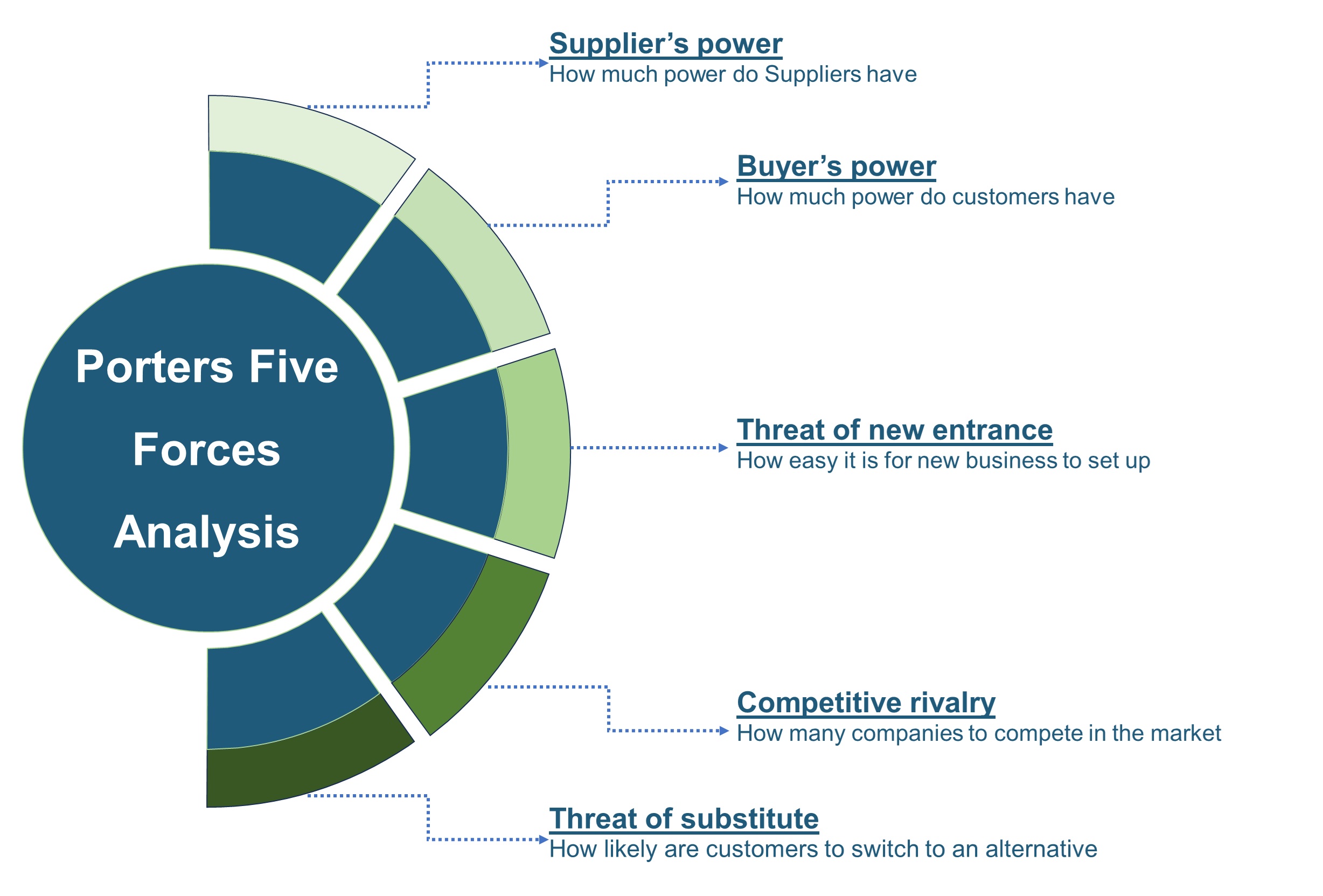

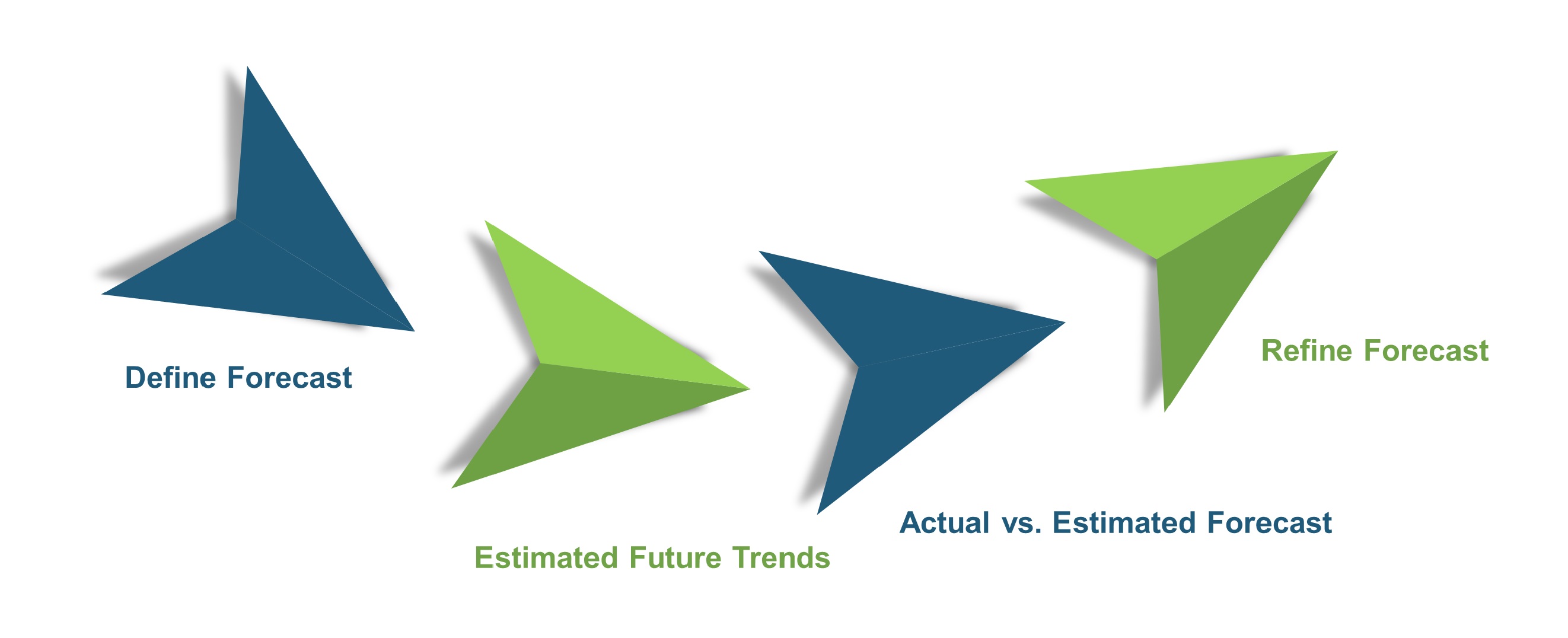
 Speak to Our Analyst
Speak to Our Analyst



